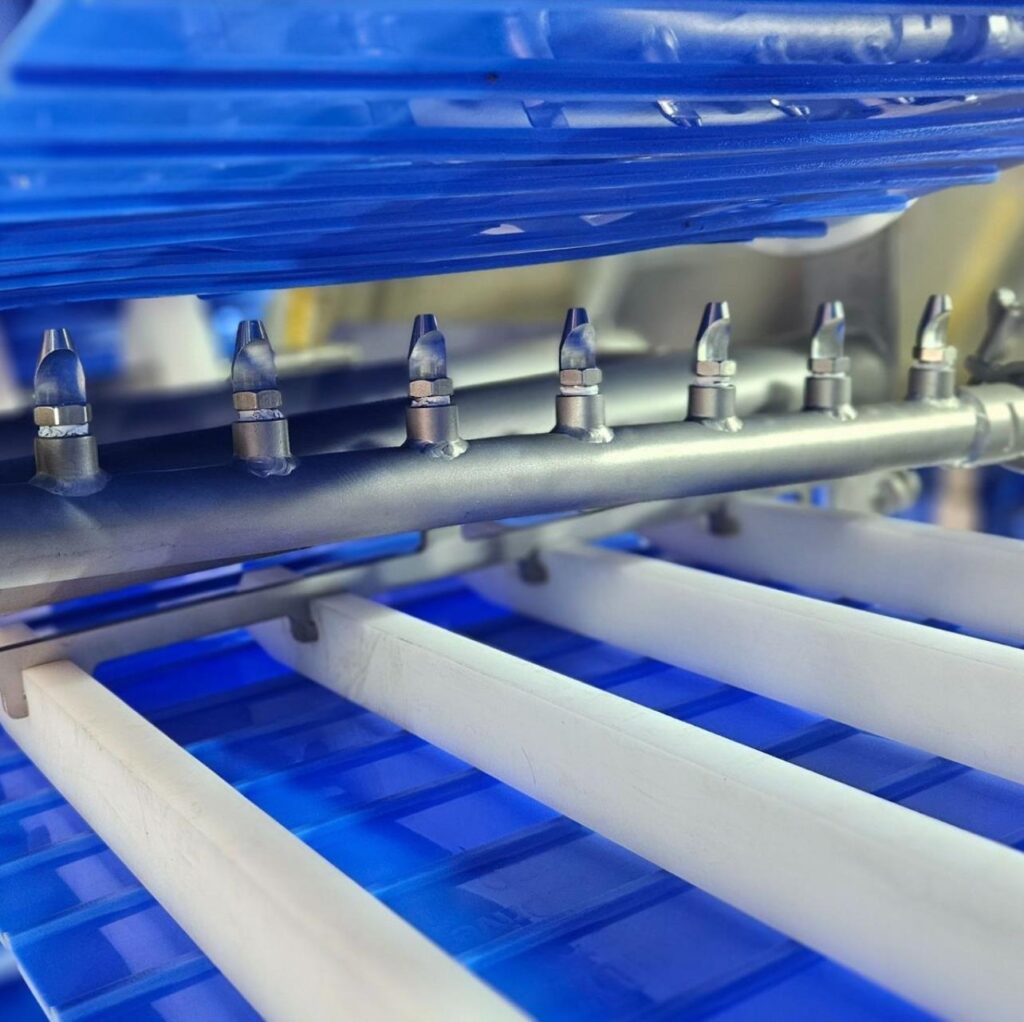
Conveyor downtime can significantly impact productivity, efficiency, and profitability, especially in the food and beverage industry. Reducing downtime involves a combination of regular maintenance, monitoring, and employing advanced technologies. This article outlines effective strategies to minimize conveyor downtime and keep your production line running smoothly.
Implement Regular Maintenance Programs
- Preventive Maintenance: Establish a preventive maintenance schedule that includes regular inspections, cleaning, and servicing of conveyor components. This proactive approach helps identify potential issues before they cause significant problems.
- Predictive Maintenance: Utilize predictive maintenance techniques to forecast potential failures based on data collected from sensors and monitoring systems. Techniques like vibration analysis and thermal imaging can predict issues before they result in downtime.
Utilize Advanced Monitoring Systems
- Real-Time Monitoring: Install sensors and monitoring systems to track the performance and condition of the conveyor system in real-time. These systems can detect anomalies such as unusual vibrations, temperature changes, or load imbalances and provide immediate alerts.
- Automated Alerts: Set up automated alerts for any deviations from normal operating conditions. These alerts can be sent to maintenance teams to prompt immediate action, preventing minor issues from escalating into major failures.
Optimize Spare Parts Management
- Inventory Management: Maintain an inventory of critical spare parts to ensure quick replacement when needed. Identify commonly replaced parts and keep them in stock to reduce downtime during repairs.
- Supplier Relationships: Develop strong relationships with suppliers to ensure quick delivery of spare parts. Having a reliable supplier network can significantly reduce the time required to obtain parts in emergencies.
Employee Training and Involvement
- Training Programs: Provide comprehensive training for employees on the operation and maintenance of conveyor systems. Ensure that they are aware of the importance of regular inspections and are capable of performing basic maintenance tasks.
- Encourage Reporting: Foster a culture where employees feel encouraged to report any abnormalities or potential issues with the conveyor system. Early reporting can lead to quick fixes and prevent larger problems.
Implement Redundant Systems
- Redundant Conveyors: In critical areas of production, consider installing redundant conveyor systems. This ensures that if one conveyor fails, another can take over, minimizing downtime.
- Parallel Systems: Utilize parallel conveyor systems to distribute the load evenly. If one system goes down, the others can continue to function, ensuring continuous operation.
Enhance System Design and Upgrades
- Modular Design: Invest in modular conveyor systems that can be easily repaired or replaced without significant downtime. Modular designs allow for quick swapping of faulty sections.
- System Upgrades: Regularly evaluate the conveyor system and upgrade outdated components. Modern systems are often more reliable and easier to maintain, reducing the risk of downtime.
Conduct Root Cause Analysis
- Failure Analysis: When downtime occurs, conduct a thorough root cause analysis to identify the underlying issue. Understanding the cause of failures helps in implementing effective solutions and preventing recurrence.
- Continuous Improvement: Use the insights gained from root cause analysis to improve maintenance practices and system design. Continuous improvement helps in reducing the likelihood of future downtime.
Leverage Technology and Innovation
- AI and Machine Learning: Employ AI and machine learning algorithms to analyze data from conveyor systems. These technologies can predict failures and optimize maintenance schedules, reducing unexpected downtime.
- Remote Monitoring: Implement remote monitoring solutions that allow maintenance teams to oversee the conveyor system from anywhere. Remote access enables quick diagnostics and troubleshooting, even when on-site presence is not possible.
Discover effective strategies to minimize conveyor downtime and improved efficiency.
Minimizing conveyor downtime is crucial for maintaining productivity and efficiency in the food and beverage industry. By implementing regular maintenance programs, utilizing advanced monitoring systems, optimizing spare parts management, training employees, employing redundant systems, enhancing system design, conducting root cause analysis, and leveraging technology, you can significantly reduce downtime and ensure smooth operation of your conveyor systems. These strategies not only improve operational efficiency but also contribute to cost savings and increased profitability.